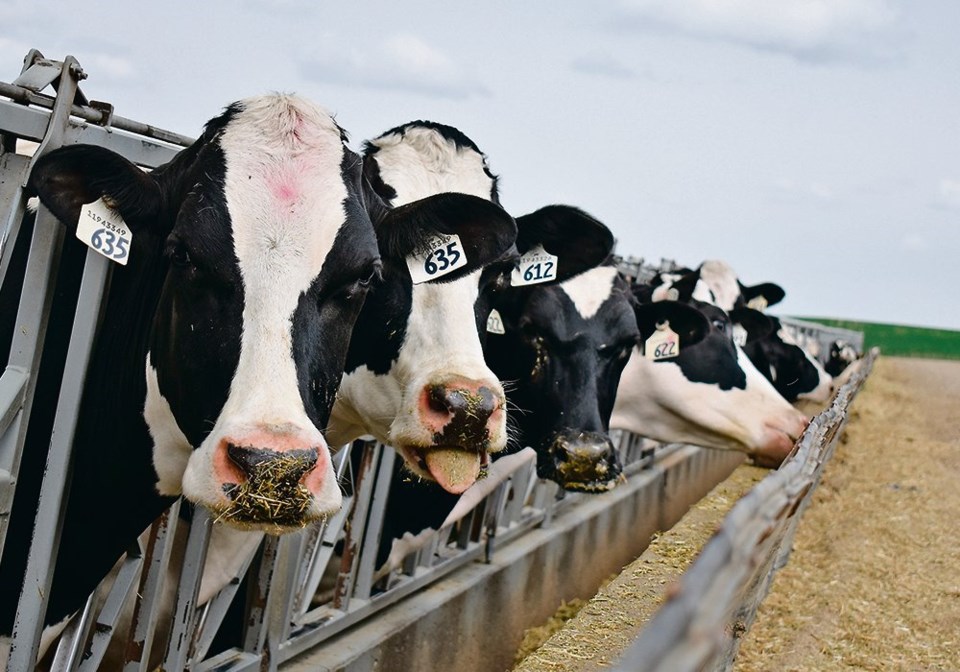A world-leading approach to creating a methane-specific breeding index has been developed by Lactanet.
Not content to wait until “sniffer” technology for measuring bovine methane emissions eventually becomes more affordable, the Canadian dairy data collection and genetics analysis organization developed the index based on milk samples.
“Canada will be the first country globally to offer national (Holstein) evaluations for methane efficiency,” said chief service officer Brian Van Doormaal during a Lactanet meeting earlier this year.
Canada’s dairy industry has committed to produce no more greenhouse gases than it consumes by 2050. Moving toward that goal with long-term genetic selection would be less of an impediment to dairy farmers’ businesses than cuts to fertilizer use or manure spreading capacity.
Mid-infrared (MIR) spectral data from millions of cows were analyzed and stored over the past five years.
Dr. Filippo Miglior, Lactanet’s senior advisor for genetics strategic initiatives, and a University of Guelph professor, says Holstein breeders who select bulls based on the new tool could achieve 20-30 per cent reductions in methane emissions from their herd by 2050, keeping with stated climate change-related federal government and Canadian dairy sector goals.
Ratings for bulls and females in the index are based on MIR predictions of methane emissions for approximately 515,000 first-lactation cows in milk-recorded herds across Canada. Considerable focus was given by the Canadian members of the team – including scientists from Lactanet, University of Guelph, and the farmer-controlled Semex bovine genetics supplier – to prove MIR is a reliable predictor of methane emissions, and the new methane efficiency index is independent of a cow’s production or fertility traits.
In the system’s introductory version, genetic predictions for methane efficiency will be available free for any Holstein female enrolled in milk recording by Lactanet, bundled with feed efficiency ratings for $8 per cow for those not on milk recording, and available for bulls on a scale ranging from $250 per Canadian-born animal to $400 for international bulls. An early-purchase discount is offered for all bulls in 2023.
Methane efficiency predictors aren’t mandatory for bulls to continue in Lactanet’s dairy cattle proofs but Van Doormaal stressed that semen suppliers should consider offering it as part of their marketing programs. Research into the index was, after all, undertaken at the direction of the farmer-controlled boards of directors of Lactanet and Semex.
Van Doormaal noted development of technology to directly collect methane emission data continues in Canada, including a new partnership between Lactanet, Genome Alberta and commercial herd Sunalta Farms.
Installation of research-friendly feed intake bins at the Alberta-based dairy “represents a significant investment in equipment, something that we needed to have on a commercial farm. And we thank the owners of that business for agreeing to our collaboration,” he said.
Pressed by a session attendee to justify the fee structure for the new index, Van Doormaal noted it’s similar to what happened when Lactanet introduced its new feed efficiency index in 2022, which predicts a daughter’s energy-corrected milk production compared to dry matter intake as a means of controlling per-litre feed costs.


